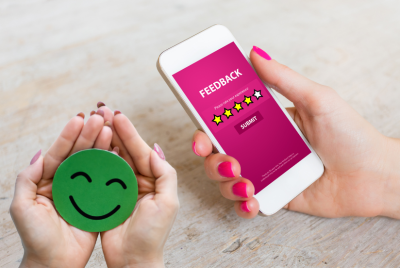Lower Funnel Marketing: Navigating the Path to Conversion
Introduction
Welcome to the world of “lower funnel marketing,” where the rubber meets the road in the realm of marketing strategies. If you’ve ever wondered how to lead potential customers down the path to conversion effectively, you’re in the right place. In this comprehensive guide, we’ll delve deep into the world of lower funnel marketing, uncovering strategies, techniques, and tips that can take your marketing game to the next level. From understanding the fundamentals to advanced tactics, we’ve got you covered.
What is Lower Funnel Marketing?
At its core, lower funnel marketing is all about converting potential customers into paying ones. This is where you roll up your sleeves and put in the hard work to close the deal. It’s the final stage of the marketing funnel, where prospects transition from mere interest to becoming customers. This is where the real action happens, and it’s a crucial part of any successful marketing strategy.
The Power of Persuasion
So, you’ve got potential customers interested in your product or service. Now, it’s time to turn on the charm. Persuasion is a skill that can make or break your lower funnel marketing efforts.
The Art of Persuasion: Convincing the Cautious Shopper
- Provide Social Proof: Display reviews, testimonials, and ratings from satisfied customers. People trust their peers, and this can be a powerful influencer.
- Use Scarcity and Urgency: Limited-time offers and low-stock notifications can create a sense of urgency, prompting potential customers to take action.
- Showcase Benefits: Focus on how your product or service benefits the customer. Will it solve their problems or make their life easier? Make it crystal clear.
- Money-Back Guarantees: Offering a risk-free trial or a money-back guarantee can eliminate potential hesitation.
The Power of Storytelling: Connect on a Human Level
Share relatable stories that resonate with your audience. Use real-life examples that illustrate how your product or service has positively impacted others.
The Role of Content in Lower Funnel Marketing
Content is king, they say, and it holds true even in the lower funnel marketing stage. Let’s explore how your content can be a powerful tool in convincing those almost-ready-to-buy prospects.
Creating Conversion-Boosting Content
- Compelling Product Descriptions: Write detailed, engaging product descriptions that leave no room for doubt.
- How-To Guides: Help your potential customers understand how to use your product effectively.
- Case Studies: Showcase real-world examples of how your product has solved problems or improved lives.
- Comparison Guides: Compare your product to competitors, highlighting the advantages.
- Email Campaigns: Automated emails that offer personalized product recommendations can be highly effective.
- Remarketing: Target those who have visited your website but didn’t make a purchase with strategic ads.
The Role of SEO in Lower Funnel Marketing
In the digital age, an effective lower funnel marketing strategy must include a solid SEO game plan.
Optimizing for Lower Funnel Keywords
- Keyword Research: Identify keywords that indicate buyer intent. These are the phrases potential customers use when they’re close to making a decision.
- On-Page SEO: Ensure your product pages and content are optimized for these lower funnel keywords. Use them strategically in your titles, headers, and throughout your content.
- Local SEO: If you have a physical presence, make sure your local SEO is on point. This is crucial for brick-and-mortar businesses.
- Long-Tail Keywords: Don’t underestimate the power of long-tail keywords. They might have lower search volume, but they often convert at a higher rate.
The Role of Paid Advertising in Lower Funnel Marketing
Paid advertising can be a game-changer when it comes to lower funnel marketing.
Targeted Advertising: Reaching the Right Audience
- PPC Advertising: Pay-Per-Click ads can be highly effective. They allow you to target specific keywords that indicate buyer intent.
- Remarketing: As mentioned earlier, this is a powerful strategy. Show ads to those who have already shown an interest in your product or service.
- Social Media Ads: Platforms like Facebook and Instagram allow for precise targeting based on user interests and behavior.
- Display Advertising: Display ads on websites and platforms your potential customers frequently visit.
The Power of Email Marketing in Lower Funnel Strategies
Nurturing Leads through Email
- Drip Campaigns: Set up automated email sequences that provide valuable content and nudges potential customers toward a purchase.
- Abandoned Cart Emails: If someone adds a product to their cart but doesn’t complete the purchase, send a friendly reminder.
- Product Recommendations: Analyze customer behavior to make personalized product recommendations via email.
The Role of A/B Testing in Lower Funnel Optimization
Fine-Tuning Your Strategy
- Testing Ad Copy: Try different variations of ad copy to see which one resonates most with your audience.
- Landing Page Testing: Experiment with the layout and content of your landing pages to optimize for conversions.
- Email Subject Lines: A small tweak in your email subject lines can significantly impact open rates.
- Call-to-Action (CTA) Buttons: Test the color, text, and placement of your CTA buttons.
FAQs: Your Burning Questions Answered
Below are some frequently asked questions about lower funnel marketing along with their answers:
1. What is the main goal of lower funnel marketing?
The primary goal of lower funnel marketing is to convert potential customers into paying customers. It’s all about sealing the deal and turning interest into action.
2. How can I build trust with potential customers in the lower funnel stage?
Building trust is crucial. You can do this by providing social proof, using compelling storytelling, showcasing benefits, and offering guarantees.
3. What’s the role of content in lower funnel marketing?
Content plays a vital role in lower funnel marketing. It includes product descriptions, how-to guides, case studies, comparison guides, email campaigns, and remarketing strategies.
4. How can SEO help in lower funnel marketing?
SEO is essential in the lower funnel stage. It involves keyword research, on-page SEO, local SEO, and targeting long-tail keywords to capture potential customers who are close to making a decision.
5. Why is email marketing effective in the lower funnel?
Email marketing is effective because it allows you to nurture leads through drip campaigns, recover abandoned carts, and make personalized product recommendations.
6. How can A/B testing improve lower funnel marketing?
A/B testing is all about fine-tuning your strategy. It helps you identify what works best, whether it’s ad copy, landing page design, email subject lines, or CTA buttons.
Conclusion
Lower funnel marketing is where potential customers become paying customers, and it’s an exciting journey. By mastering the art of persuasion, creating conversion-boosting content, optimizing for SEO, using paid advertising, harnessing the power of email marketing, and fine-tuning your strategy through A/B testing, you can navigate this critical stage with finesse.
So, go ahead, implement these strategies, and watch your conversion rates soar. Remember, lower funnel marketing is the final lap in the race, and the finish line is within sight. It’s time to cross it and celebrate your marketing success.




